By Randy L. Anderson, USDA-ARS
One of the benefits of no-till and crop diversity is increased activity of the soil microbial community. This change is especially favorable for restoring soil health, because of the numerous biological processes in soil that are based on microbial functioning (Figure 1).
For example, the microbial community is necessary for building organic matter and soil aggregates, as well as cycling nutrients and aiding nutrient uptake by plants.
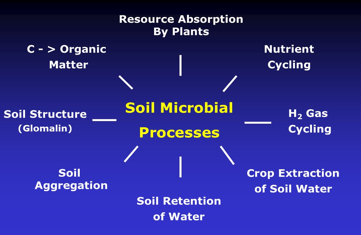
Figure 1. Biological processes related to or mediated by the soil microbial community.
The scientific community is seeking to increase the microbial contribution to agriculture production (see Reference 3). They’re developing management strategies to enhance microbial functioning, and consequently, improve crop performance.
Diversifying the microbial community and increasing its activity not only increases crop yield, but also can reduce inputs needed for crop growth by supplying nutrients or improving nutrient-use-efficiency. With this article, we describe research that quantifies the beneficial impact of the microbial community on crop production and nutrient-use-efficiency.
Corn Yields
In eastern Nebraska, scientists quantified the effect of weather conditions and soil microbial activity on corn yields, using a simulation model based on 12 years of data (Reference 6).
This study compared rotations established in a reduced-tillage system. One comparison evaluated corn response to microbial activity in two rotations: monoculture corn (C-C), and a corn-soybean-grain sorghum-clover/oat forage mixture (C-SB-Sor-C/O) rotation.
Reducing tillage increased microbial activity across time, and subsequently, improved corn yield with the same N and water supply. Comparing yields across 12 years, corn yielded 11% more in monoculture corn with higher microbial activity (Figure 2), a gain of 12 bushels an acre.
Yield gain due to increased microbial activity was even greater in the rotation comprised of 5 crops. With the same level of microbial activity, corn yield increased 27% in the five-crop rotation, or 28 bushels per acre.
This additional gain in yield, noted by the green arrow in Figure 2, shows that microbial diversity due to crop diversity also improves corn yield along with greater microbial activity.
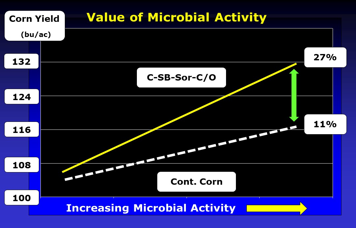
Figure 2. Corn yield as affected by activity of the microbial community in soil. Yield and microbial data were collected in a long-term rotation study in eastern Nebraska. Abbreviations are: C, corn; SB, soybean; Sor, grain sorghum; C/O, clover-oat mixture for forage (Reference 6).
Increased Nutrient Uptake
One possible explanation for improved corn yields with higher microbial activity is that nutrient uptake by crops may increase with microbial activity. In a research experiment that used an intact soil profile encased within a lysimeter (Figure 3), scientists were able to quantify the impact of microbial functioning on corn growth (Reference 2).
The lysimeter allows scientists to completely control quantity of growth variables such as water, nitrogen (N), and phosphorus (P) available for crop growth. Two treatments with the microbial community were compared in this study. The first treatment was the control, comprised of the native microbial community in the soil.
The second treatment involved diversifying and enlarging the microbial community to increase its functioning (referred to as enriched). After allowing the microbial community to equilibrate, corn was grown with an equal supply of water, N, and P for both treatments.
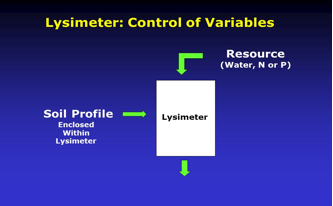
Figure 3. Experimental methodology with a lysimeter that encases a soil profile. The system ensures that uniform inputs (water, N, and P) are applied across treatments, and can determine if inputs leach out of the system. The microbial community was enhanced in one treatment, allowed to equilibrate, and corn grown in both the control and enhanced microbial treatment.
Corn yielded 22% more grain with the enriched microbial community. The authors attributed this yield gain to higher concentrations of N and P in corn.
Assessed at tasseling, N concentration was 29% higher in corn grown with the enriched microbial community, whereas P concentration in corn was 110% higher. This gain with N and P concentration was due to greater biological retention in soil and plant uptake of these nutrients.
A similar trend has been observed by producers in fields with several years of no-till and crop diversity, where the need for N in corn is less. The guideline for calculating N inputs for corn in tillage-based systems is 1.2 pounds of (N) per bushel of corn.
However, no-till producers are using 0.8 to 0.9 pounds per bushel to calculate N need, and still achieving high yields. They attribute reduced N need by corn to microbial-enhanced N cycling in soils and N uptake by corn.
Producers are also reducing P input in their systems. A study in the semiarid Great Plains found that P concentration was 15-30% higher in crops grown with no-till and continuous cropping compared with any rotation that included fallow or tillage. This gain with P concentration in crops was attributed to increased organic pools of P and microbial enhancement of P availability for plants.
Water Use Efficiency
One benefit of increased soil microbial activity is that water-use-efficiency (WUE) of crops may improve. In the lysimeter study discussed above, WUE of corn was higher when grown in soil with the enriched microbial community, producing 22% more grain with the same water use.
Increased WUE has also been observed in the semi-arid Loess Plateau of China (Reference 5).
The prevalent cropping system in this region is continuous winter wheat. Scientists in this region are seeking to diversify this rotation with the goal of improving both crop yield and soil health. They found WUE of winter wheat increases with some rotations, which they attributed to changes with soil microbial activity.
Average winter wheat yield in the monoculture rotation during the 13-year study was 46 bushels an acre based on 16 inches of water use, or 2.9 bushels per acre. Adding diversity to the crop rotation increased WUE, but this change was related to crop choice.
WUE didn’t change when proso millet was added to the rotation (Figure 4), but winter wheat following corn was 8% more efficient with water use. Dry pea also improved WUE. Growing dry pea in place of corn in a 4-year rotation increased WUE of wheat 12%.
A further gain in WUE occurred when both corn and dry pea was grown with winter wheat; WUE improved 21%. Thus, winter wheat yielded 56 bushels per acre with 16 inches of water use in this diverse rotation with corn and dry pea, the same water supply that monoculture winter wheat used to produce 46 bushels an acre.
Higher WUE of winter wheat likely was related to changes in the soil microbial community. Both dry pea and corn enhance microbial species that have been shown to improve WUE of crops, such as mycorrhizae and rhizobacteria.
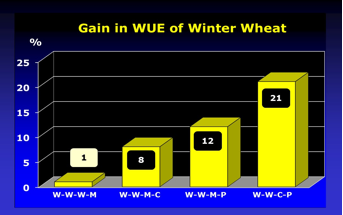
Figure 4. Change in water-use-efficiency (WUE) of winter wheat in various rotations in the semiarid Loess Plateau of China. Abbreviations: W, winter wheat; M, proso millet; C, corn; and P, dry pea. Data represent the change in WUE compared to continuous winter wheat (Reference 5).
Drought Impacts
A study in the Ontario Corn Belt showed that yield stability of corn and soybean increases when grown in a no-till, corn-soybean-spring wheat rotation with cover crops compared with a tilled, corn-soybean rotation (Reference 4).
Analyzing yields across 31 years, corn and soybean were greater with no-till and crop diversity, but the greatest gain occurred in drought years. Soybean yield was 22% higher in dry years compared with 10% gain over all years. Corn yield responded similarly. This yield gain in dry years was attributed to improved soil health and greater microbial activity.
A second example was demonstrated in eastern South Dakota (Reference 1). Dry pea changes the microbial community by increasing rhizobacteria density in soil. Crops such as winter wheat and corn yield more following dry pea because rhizobacteria improve resource-use-efficiency, such as with water. Yet, the positive impact of dry pea on corn yield is greater in dry years.
Comparing corn yield following dry pea to yield following soybean, corn yielded 11% more following dry pea across all years. But yield gain was greater in the dry years, averaging 18% in the three dry years (Figure 5).
When corn yielded 100 bushels an acre following soybean in a dry year, corn yielded 123 bushels per acre following dry pea. In contrast, when corn yielded 165 bushels per acre following soybean in a favorable year, dry pea improved corn yield only 4% above this yield. The impact of dry pea on corn yield is more pronounced during low-yielding years.
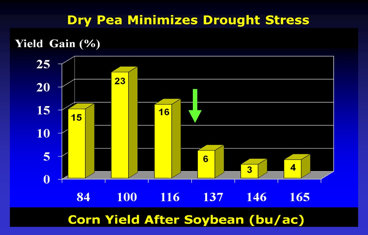
Figure 5. Impact of dry pea on corn yields during varying environments. Yield gain following dry pea was calculated by dividing corn yields grown after dry pea by corn yield following soybean. Experiment conducted at Brookings, SD. The green arrow signifies the county average yield for corn (130 bushels per acre) during the years of this study, 2006-2011 (Reference 1).
Improving Crop Performance
Systems that integrate no-till, crop diversity, and cover crops are increasing microbial activity and diversity, and consequently, improving crop yields.
Examples discussed above indicate that this approach can help producers increase crop yields 15 to 30% without increasing inputs, or in some situations, reducing inputs such as N and P.
This approach will be especially favorable in regions where water supply is often low. Furthermore, greater microbial activity will accelerate restoration of soil health due to its involvement with several biological processes in soil (Figure 1).
References
1) Anderson R.L. 2011. Synergism: a rotation effect of improved growth efficiency. Advances in Agronomy 112:205-226.
2) Bender, S.F., M.G.A. van der Heijden. 2015. Soil biota enhance agricultural sustainability by improving crop yield, nutrient uptake, and reducing nitrogen leaching losses. Journal of Applied Ecology 52:228-239.
3) Bender, S.F., C. Wagg, and M.G.A. van der Heijden. 2016. An underground revolution: biodiversity and soil ecological engineering for agricultural sustainability. Trends in Ecology & Evolution 31:440-452.
4) Gaudin, A.C.M., T.N. Tolhurst, A.P. Ker, K. Janovicek, C. Tortora, R.C. Martin, and W. Deen. 2015. Increasing crop diversity mitigates weather variations and improves yield stability. PloS ONE 10 (2) eo113261. Doi: 10.1371/journal.pone.0113261.
5) Huang, M., M. Shao, L. Zhang, and Y. Li. 2003. Water use efficiency and sustainability of different long-term crop rotation systems in the Loess Plateau of China. Soil & Tillage Research 72:95-104.
6) Yamoah, C.F., G.E. Varvel, C.A. Francis, and W.J. Waltman. 1998. Weather and management impact on crop yield variability in rotations. Journal of Production Agriculture 11:219-225.






Post a comment
Report Abusive Comment